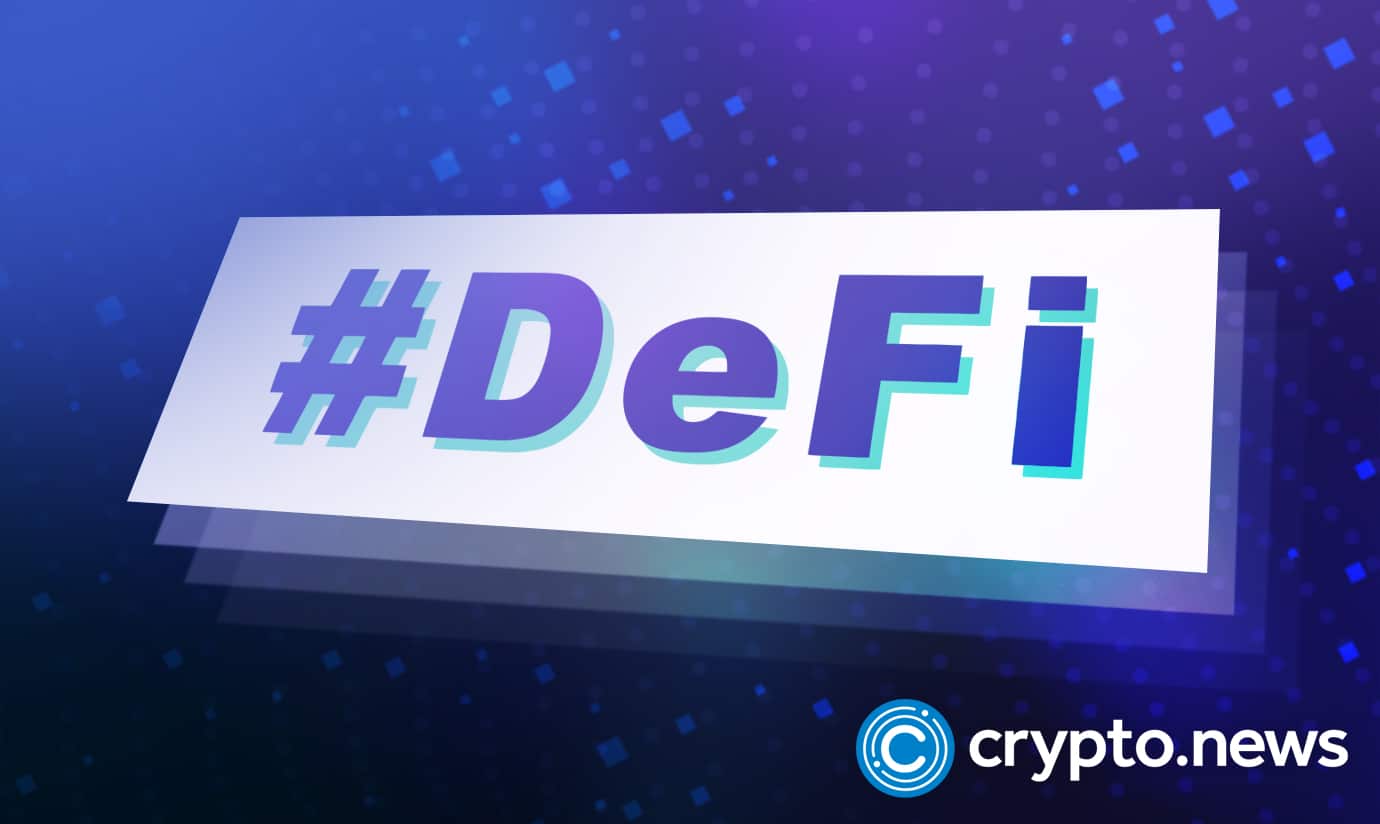Before NFTs and the Metaverse, Decentralized Finance (DeFi) has been the champ rocking the cryptosphere to high seas never reached before. Perusing the earlier records, you will find that crypto enthusiasts invested up to $126.02 billion in the top 125 DeFi apps last year. These numbers were projected to go higher if not for the current global bear run crippling all markets, even the digital currencies.
Regardless, the advancements in the DeFi sector are undeniably impactful to ignore. Unlike in the crypto markets, where investors use terms like trading volume, market capitalization, and total circulating supply to track cryptocurrencies, financial experts have introduced the total value locked (TVL) as a vital indicator in monitoring DeFi investments.
Any avid DeFi investor must understand TVL to make accurate investment decisions and succeed in the decentralized finance space. Here’s an in-depth analysis of TVL and why it matters when exploring a decentralized finance ecosystem.
Total Value Locked (TVL) Explained
TVL is a crypto indicator representing the real-time value of cryptos locked up on DeFi’s smart contracts. In simple terms, TVL is the total value in $US Dollar of all assets deposited into the DeFi project’s smart contracts. These funds are locked in DeFi platforms for three main reasons. That is:
- Lending
- Staking, Yield farming
- Liquidity pools
Investors can use TVL to analyze the value and significance of a DeFi project or protocol. However, it’s important to note that TVL doesn’t include the amount in outstanding loans or the yield earned by DeFi protocols. Instead, it simply reflects the current value of the deposits in DeFi protocols, usually denoted in the US dollar.
The TVL of the DeFi market or a DeFi protocol constantly changes when investors deposit or withdraw funds into the DeFi projects. TVL also fluctuates in line with the changing value of the fiat currency, usually the US dollar and denominated in the project’s native token. As such, if the fiat currency or the project’s native token increases in value, so does the protocol’s TVL and vice versa.
DeFi protocols can be based on a single or across various blockchain networks. For DeFi protocols spread across different blockchain networks, the TVL is denoted per each blockchain network. Ethereum blockchain network is currently the most extensive network in TVL, with over five hundred DeFi protocols in staking, lending, and more liquidity pools onboarding. This accounts for almost half of the DeFi industry TVL, which currently stands at $156 billion.
Why Does TVL Matter in the DeFi Space?
DeFi platforms require capital to be deposited as liquidity or loan collateral in trading pools to be accountable when calculating TVL. Therefore, TVL is important for the DeFi community as it shows the capital’s impact on the DeFi protocol’s profits and losses for concerned traders and investors. Simply put, TVL gives the overall health of the DeFi space.
The TVL of an individual DeFi project represents all the funds present in the protocol in terms of lending, borrowing, and transactional capacities. The overall TVL of the DeFi space is generally the summation of all the TVL across various DeFi protocols. Sentimentally, TVL can measure investors’ faith in a particular DeFi protocol.
A DeFi protocol with a high TVL may mean more capital is locked in its smart contracts with greater popularity, usability, and liquidity. It also means that the project is gaining attention among active and monthly transacting users, conveying a higher ROI (Return on Investment). On the contrary, a lower TVL implies that the DeFi protocol has lower liquidity and, as a result, lower yields.
TVL of a particular DeFi protocol can also be used to indicate the market performance of its native token. By constituting the figure of TVL with the market cap, we can know whether a protocol’s native coin is undervalued or overvalued. A token is considered overvalued/undervalued if the project’s market cap is high/low relative to its TVL.
More or less, TVL is a crucial metric in the DeFi space for swapping and lending protocols by displaying the overall investors’ faith and interest. These kinds of protocols often aim for higher TVL. A higher TVL implies higher efficiency as well as an adequate supply of liquidity for borrowers in the lending markets.
How Is TVL Calculated
The first step in calculating the TVL of a particular DeFi project is establishing its market cap. You can do this by multiplying the project’s token supply by the current price, usually in US Dollars. The TVL is then calculated by dividing the market cap by the maximum circulating supply.
Relationship between Market Cap and TVL
Both market capitalization (cap) and TVL are important DeFi indicators. Market cap refers to the total value of the protocol’s token and is calculated by multiplying the total number of tokens by its current market price, usually in USD. It can be used as an indicator of the market value of the DeFi protocol.
While both are significant DeFi indicators, TVL is considered more accurate than market cap, especially in the DeFi ecosystem. That’s because the market cap captures the protocol’s passive and active users but fails to provide an accurate figure regarding the number of active users and the project’s popularity.
In other words, the market cap still captures passive investors who may purchase the protocol’s token with the hope that the token will grow and may not be using the protocol quite actively. TVL, on the other hand, factors in only the active users of the protocol, reflecting the platform’s true popularity, liquidity, and usability.
Market cap and TVL can be used to calculate the TVL ratio of the DeFi project to establish whether its native token is overvalued or undervalued. The TVL ratio is calculated by dividing the market cap by the TVL of the token. A TVL ratio of less than one indicates that the token is undervalued, while a TVL ratio of more than one indicates that the token is overvalued. An undervalued token is more attractive to investors as there is room for growth depending on the project’s usability.
Types of DeFi Protocols and their TVL
There are different types of DeFi protocols, and the TVL may take different forms, as explained below:
- Lending and Borrowing Protocols- Lending and borrowing protocols feature liquidity pools that allow users to lend and borrow crypto funds via the pools. Compound (COMP), Aave (AAVE), and Maker (MKR) are the top lending and borrowing DeFi protocols. TVL for these protocols is the total value locked in the liquidity pools.
- Yield Optimization Protocols- Yield optimization protocols function as automated portfolio managers allowing users to optimize their investments across several lending and borrowing DeFi protocols. Yearn. Finance (YFI) is an excellent example of a yield optimization protocol. TVL for such platforms is the value lent out by lenders on the protocol for yield optimization.
- Decentralized crypto exchanges (DEXes)-DEXes facilitate the swapping or trading cryptos on an automated market maker (AMM). In DEXes, transactions are conducted via liquidity pools that hold the required crypto pairs. Curve Finance (CRV), Uniswap (UNI), and SushiSwap (SUSHI) are the top DEXes. The TVL is the total value held in all the coin-pair pools within the protocol for decentralized crypto exchanges.
TVL May Not Always be Right
In some cases, TVL may not donate the actual valuation of a DeFi project. Some DeFi projects may have large investors, i.e., whales, who can sway the TVL of the project with a single withdrawal or deposit. In some cases, the whales may be incentivized to hype a DeFi protocol by making significant investments and sending positive signals to woo potential investors. In such cases, the TVL may fail to portray the actual state of the project.
Therefore, with this in mind, investors need to consider other indicators aside from TVL to establish whether a specific DeFi protocol is a viable investment.
Closing Words
Total Value Locked (TVL) is an essential indicator of a DeFi’s protocol liquidity, popularity, and usability. TVL also indicates the potential and reliability of a DeFi protocol. It’s a better indicator than the market cap since it portrays the value of DeFi protocols and networks. Ethereum is the largest DeFi network in terms of TVL, hosting approximately 500 DeFi protocols. DefiLlama and DeFi Pulse are the best platforms to find out TVLs of DeFi protocols and networks.
Frequently Asked Questions
What is the overall TVL of DeFi protocols today?
According to Defipulse, the current total value locked in DeFi protocols is $40.67 billion, down from $67.258 billion in May 2022. Maker, Uniswap, and Aave are the top three protocols on the list, with $7.9B, $7.04B, and $5.15B, respectively.
What is the overall TVL of DeFi protocols today?
According to Defipulse, the current total value locked in DeFi protocols is $40.67 billion, down from $67.258 billion in May 2022. Maker, Uniswap, and Aave are the top three protocols on the list, with $7.9B, $7.04B, and $5.15B, respectively.
Why is DeFi TVL important?
The TVL in DeFi gives investors a glimpse of how the space is performing in the crypto markets. Furthermore, it helps traders know credible projects from scams. It also assists enthusiasts in weighing their options on which project to select to get better returns. As it stands, low TVL indicates low liquidity; hence, low overall returns.
How do you calculate TVL?
The formula is; (token supply × current token price) ÷ max circulating supply
Sourced from crypto.news.
Written by Wayne Jones on 2022-08-03 08:00:00.










